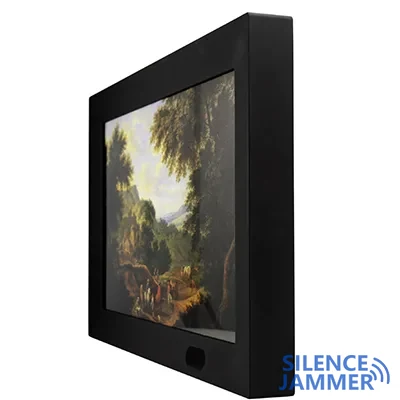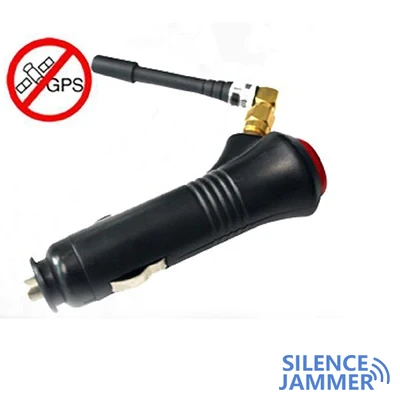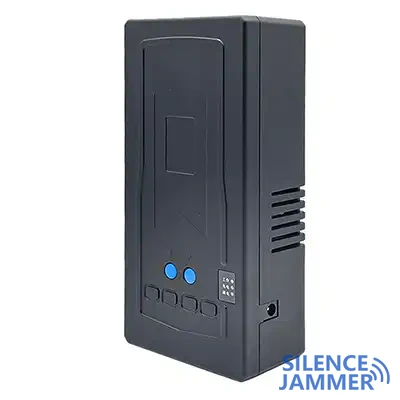In the modern education environment, the widespread use of mobile phones has brought many conveniences, but it has also caused some problems. Students using mobile phones in class will distract their attention, and using mobile phones in exams may lead to cheating. Therefore, many schools have begun to consider installing cell phone signal shielding systemss.
Key factors in choosing a cell phone signal shielding systems
When choosing a cell phone signal shielding systems, you need to consider the following key factors:
Coverage:
- Classrooms and examination rooms: For ordinary classrooms and examination rooms, you need to choose a shield with moderate coverage to ensure that the mobile phone signal in the entire classroom or examination room can be shielded.
- Public areas: For public areas of the school, such as libraries, dormitories, etc., you need to choose a shield with a large coverage to ensure that the mobile phone signals in these areas can also be effectively shielded.

Frequency band selection:
- Multi-band support: The mobile phone communication bands in different regions are different. Choosing a shield that supports multiple bands can ensure that both 2G, 3G, 4G and 5G signals can be shielded.
- Local adaptability: Understand the main frequency bands used by local operators, select shielding equipment that adapts to local conditions, and ensure shielding effect.
Power and adjustment:
- Power adjustment: Select a shielding device that can adjust the power so that the shielding range can be adjusted according to the actual situation to avoid interfering with normal communications outside the school.
- Intelligent control: Some advanced shielding devices support intelligent control, which can automatically adjust the power and frequency band as needed to improve the shielding effect and flexibility.
Installation and aesthetics:
- Concealed installation: In the school environment, the installation location of the cell phone jammer should be as concealed as possible to avoid affecting the beauty and normal use of the school. You can choose shielding equipment that is small and easy to hide.
- Aesthetic design: Choose equipment with beautiful appearance and coordinated with the school environment to avoid the exposure of the equipment affecting the overall environment.
Stability and reliability:
- Equipment quality: Choose equipment with reliable quality to ensure stability in long-term use. You can refer to the use experience of other schools and the reputation of the manufacturer.
- After-sales service: Choose a supplier that provides good after-sales service to ensure that problems with the equipment can be solved in time.

Steps to install a cell phone signal shielding systems
Demand analysis:
- Clear goals: According to the actual needs of the school, clarify the area and range of signals that need to be shielded. The needs of different regions may vary, and detailed planning is required.
- Market research: Research the shielding equipment available on the market, understand the characteristics of different models and brands, and choose products that meet the needs of the school.
Supplier selection:
- Multi-party comparison: Select multiple suppliers for comparison, comprehensively consider factors such as equipment quality, price, and after-sales service, and select the most suitable supplier.
- On-site survey: Invite suppliers to the school for on-site surveys, and provide specific equipment selection and installation plans based on actual conditions.
Equipment installation:
- Professional installation: Professionals install the equipment to ensure that the equipment is reasonably located, firmly connected, and works properly. In particular, the layout of the antenna requires professional debugging to ensure coverage.
- Debugging test: After the installation is completed, debug and test the equipment to ensure that the shielding effect meets expectations. The equipment position and power can be adjusted through multiple tests to achieve the best effect.
Training and management:
- Staff training: Train relevant management personnel to familiarize them with the operation and maintenance methods of the equipment. Especially in emergency situations, they can quickly handle equipment failures or adjust equipment.
- System management: Formulate corresponding management systems to standardize the use of shielding equipment to ensure that the equipment works when needed and does not interfere with normal communications when not needed.

Precautions for maintaining the cell phone signal shielding systems
Regular inspection:
Equipment status: Regularly check the working status of the equipment to ensure that the equipment is operating normally. Including checking the power connection, signal strength, equipment temperature, etc.
Signal coverage: Regularly test the signal coverage to ensure that there are no signal dead spots. If dead spots or insufficient coverage are found, adjust the equipment or add equipment in time.
Cleaning and maintenance:
External cleaning: Keep the outside of the equipment clean to prevent dust and dirt from accumulating. You can wipe it gently with a clean cloth and avoid using liquid detergents.
Internal cleaning: If conditions permit, ask professionals to clean the inside of the equipment to prevent dust from entering the inside of the equipment and affecting performance.
Software update:
Firmware upgrade: Some high-end shields support firmware upgrades. Regularly check the manufacturer's update information and perform firmware upgrades in time to ensure equipment performance and security.
Management software: If the device is equipped with centralized management software, it also needs to be updated regularly to ensure software functionality and security.
Emergency handling:
Emergency plan: Develop a detailed emergency plan, including how to deal with equipment failures and equipment shutdown operations in emergency situations. Conduct emergency drills regularly to ensure that relevant personnel can respond quickly in emergencies.
Spare equipment: Consider equipping a certain number of spare equipment, which can be replaced in time when a failure occurs to ensure the continuity of the shielding system.
Selecting and installing a suitable cell phone signal shielding systems is a complex but necessary process for the education industry. Through scientific and reasonable planning, professional installation and meticulous maintenance, the effective operation of the shielding system can be ensured, and the purity and safety of the education environment can be guaranteed.


